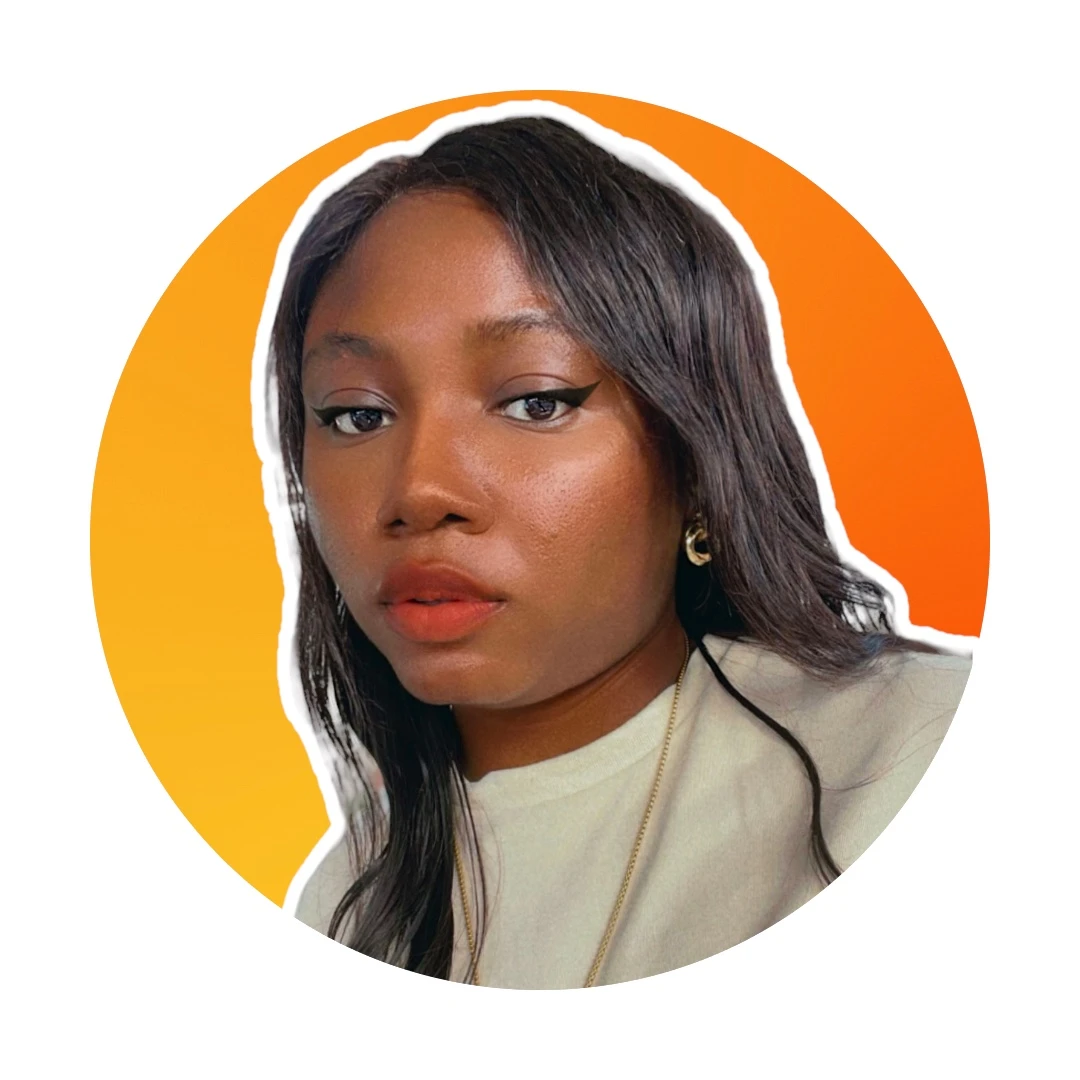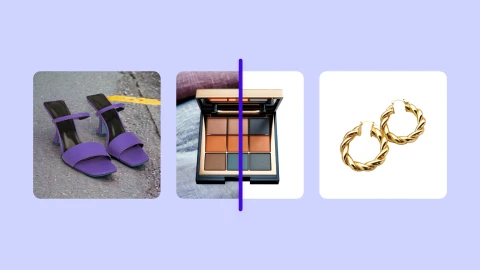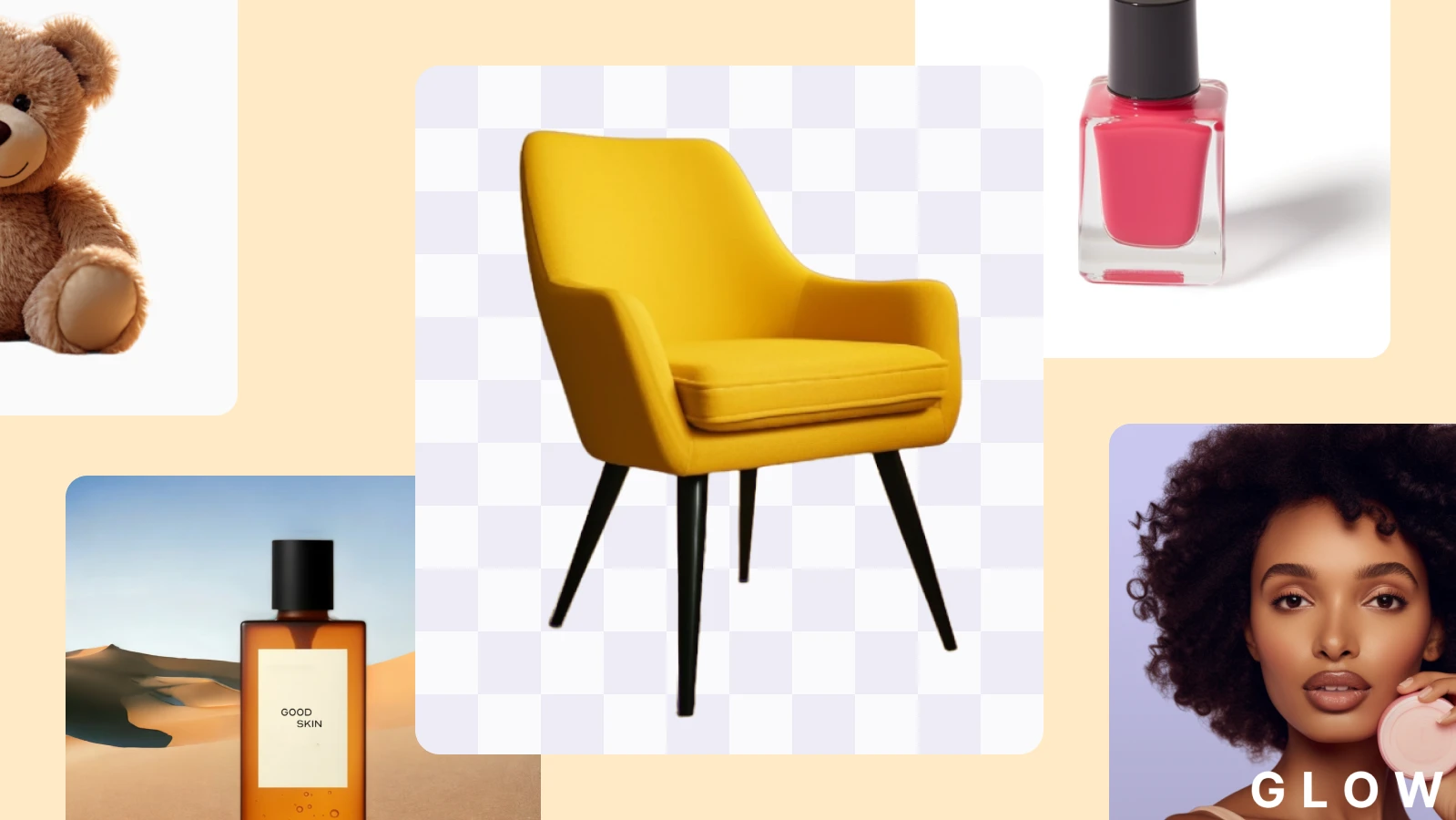6 best AI image generators of 2025


If you have been anywhere on the internet lately, you have seen AI images pop up somewhere. The hyper-realistic portraits, the extra surreal landscapes, and sometimes the multiple fingers and toes are usually the obvious giveaway. However, AI-generated images are being blended more and more in mainstream media thanks to the tools on this list.
If you are a content creator, a solopreneur, or just curious, get into this article to see how AI generates images and the best AI image generators at your disposal.
Best AI image generators
Midjourney: best AI image generator for highly detailed visuals
Photoroom: best AI image generator for instant product photography
Adobe Firefly: best AI image generator for creatives and artists
DreamStudio: best AI image generator for controlled creativity
The 6 best AI image generators
We've handpicked the best AI image-generating software from the numerous options available on the market, for their standout features and capabilities.
At a glance
| Tool | Platform | Key features | Best for | pricing |
|---|---|---|---|---|
| DALL-E | Web (via ChatGPT account) | Text-to-image generation, highly creative outputs, prompt variations, unlimited regeneration | Artists, designers, marketers, and creatives | $20/month (included in ChatGPT Premium plan) |
| Midjourney | Discord (no standalone app) | Text-to-image creation, high detail, vibrant colors, active user community | Conceptual art, branding materials, storyboards | $10/month (minimum subscription, approx. 3.3 hours of generation time) |
| Photoroom | Web, Mobile (iOS & Android) | Instant product photography, AI background removal, batch mode, retouch tool | Solopreneurs, content creators, e-commerce marketers | Free (limited), Pro: $9.99/month or $89.99/year |
| Adobe Firefly | Web app (integrated with Adobe CC) | Text-to-image, generative fill, text effects, generative recolor | Artists, photographers, marketers | Free plan (25 credits/month, watermarked output), $10.74/month for 250 credits |
| DreamStudio | Web (Stable Diffusion) | Text-to-image, negative prompts, upscale, multiple image generation | Visual creatives who need high control over outputs | Free (100 credits upon signup), Pay-as-you-go ($10 per 1000 credits) |
| FLUX | Web, API, Hugging Face, Replicate | Open models, ultra-high resolution, NVIDIA optimization, partner platform integration, 3D-guided generation | Developers, 3D creators, businesses | Free (open models), Pro: API-based pricing via partner platforms |
1. DALL-E: Pioneer in AI image generation
 We can’t possibly talk about AI image generators without mentioning the foundation on which they are built. DALL-E is a revolutionary AI image generator developed by OpenAI (the company behind ChatGPT), which made headlines for its capability of generating unique images from textual descriptions.
We can’t possibly talk about AI image generators without mentioning the foundation on which they are built. DALL-E is a revolutionary AI image generator developed by OpenAI (the company behind ChatGPT), which made headlines for its capability of generating unique images from textual descriptions.
It’s important to note that while DALL-E is a product of OpenAI, it’s not currently openly available to the public. Gaining access to DALL-E is often done by developers and research institutions as OpenAI has not yet launched it for individual or commercial use. However, you can access it indirectly via a ChatGPT account.
ChatGPT is an artificial intelligence program developed by OpenAI, the same company that created DALL-E. The subscription comes at a price of $20/month, providing access to both the text-generation tools of ChatGPT and the image-generation capabilities of DALL-E.
Once you are subscribed, you can use DALL-E by providing it with prompts—the text descriptions that guide the AI to create an image. These prompts can be as simple or as complex as needed, and DALL-E will generate an image based on that description.
Key features
Highly creative outputs: DALL-E excels at creating original, creative, and sometimes surrealistic image outputs that challenge and delight the viewer.
Text-to-image creation: Like other AI image generators, DALL-E accepts text prompts, turning them into unique pictures. However, it stands out for the high fidelity and artistry it brings to its outputs.
Prompt variations: Sometimes, DALL-E allows you to generate various interpretations of the same prompt and choose the one you want.
Unlimited re-generative capabilities: You can send as many prompts as possible to tweak the ai generated images by adding, removing, or altering elements, thereby offering a high level of image customization.
Best use cases
DALL-E is an excellent image creator for generating creative images for use in digital content, art projects, concept visualizations, and games. Because of its ability to generate high-quality and imaginative visuals from text, it can be a critical tool for artists, designers, marketers, and creatives.
Pricing
The premium plan for ChatGPT (where you can access DALL-E) is $20/month
2. Midjourney: best AI image generator for highly detailed visuals
 These are examples of Midjourney's AI art as seen on their showcase page: midjourney.com/showcase
These are examples of Midjourney's AI art as seen on their showcase page: midjourney.com/showcase
Midjourney is an AI text-to-image generator that has captured the hearts of creatives with its unique ability to transform text prompts into dreamy, surreal, and hyper-realistic images. This platform operates similarly to DALL-E, as they both use text-to-image generation technologies. However, Midjourney distinguishes itself with the vibrancy and aesthetic appeal of its outputs.
Midjourney's algorithms excel in color theory and application, resulting in images bursting with rich, well-balanced hues that make the artworks visually striking and more expressive. Not only are the images vibrantly colored, but they also exhibit a pleasing aesthetic, captivating their viewers' attention.
This aesthetic quality can be largely attributed to the tool's ability to impeccably understand and apply sophisticated artistic principles, such as composition, shape arrangement, and shading, among others.
Midjourney is currently accessible only via their Discord server (no standalone mobile app or web app). This can be a good thing if you already know your way around Discord, or a relatively bad thing if otherwise. The quality of the images you get is worth the hassle as there are many Midjourney users every day.
To start using Midjourney, you have to subscribe to a payment plan after signing in to Discord. There are no free trials available but the cheapest plan of $10/month gives you about 3.3 hours of generating time, allowing you to create between 50 to 200 images (depending on your speed or the server). After subscribing, you can start submitting your image requests to the Midjourney bot using “/imagine” in front of your prompt.
Key features
Text-to-image creation: Midjourney accepts text prompts and turns them into new images. This can include anything from landscapes and portraits to abstract concepts and specific scenes.
Customization and detail: Users can specify details in their prompts, allowing for a high degree of customization in the ai generated content. The more detailed the prompt, the more tailored the output.
Active community: Midjourney has cultivated one of the most engaged communities of users who share their creations, tips, and prompts. The #General and #newbie channels in their Discord server are great landing pads for new users.
Best use cases
Midjourney is best for conceptual art and not that great for product photography. If you want to use it as a solopreneur or content creator, it’s great at creating branding materials like logos and artwork for storyboards due to its high image quality.
Pricing
Midjourney used to be freely available, but not anymore. There is a $10/month subscription fee before you can generate any image.
3. Photoroom: best AI image generator for instant product photography
 Photoroom is a dynamic AI image generator designed to transform how solopreneurs handle product photography with generative ai. It enables you to create professional-looking images in mere minutes, without needing a studio setup or advanced photography skills.
Photoroom is a dynamic AI image generator designed to transform how solopreneurs handle product photography with generative ai. It enables you to create professional-looking images in mere minutes, without needing a studio setup or advanced photography skills.
With Photoroom, you can effortlessly enhance your product photos, making them ready for e-commerce platforms, social media, or your website. It provides a range of editing options, from basic adjustments like removing backgrounds, to more complex edits, such as adding shadows or reflections to give images a more polished look.
Unlike Midjourney and DALL-E, Photoroom is not heavily reliant on prompts. You can generate images with prompts when using the image generator tool. But the platform has a complete editor where you can apply editing filters and adjust the content of your image.
It also has a tool for creating background images. There is always a fresh library of AI image backgrounds grouped in categories. But, with the AI Background feature, you can use prompts to generate new, specific backgrounds.
Its intuitive design ensures that even those new to photo editing can achieve outstanding results quickly. Photoroom is accessible via a mobile app available on the App Store and Google Play Store. There is also a web app at app.photoroom.com.
Key features
AI Images: With the AI Images tool, you can generate images from scratch, create custom logos, develop visual templates for your brand kit, make unique posters, and so much more.
Background Remover & AI Backgrounds: Photoroom uses AI to neatly remove the background from your photo in one single sweep and replace it with an existing background or a background from your prompt.
AI Shadows: This feature enables you to add natural-looking shadows to your product photos, enhancing their aesthetic appeal and making the objects appear grounded in their surroundings.
Image Resize: You can automatically resize an image to fit many pre-existing dimensions. This is especially helpful if you are in e-commerce and want to host your products on several marketplaces like Etsy, Shopify, Poshmark, etc.
Retouch: You can use Photoroom’s AI to clean up your images and remove any unwanted objects from your photos without messing up your picture.
Batch Mode: This feature allows you to edit and make changes to multiple images at the same time.
Negative prompt: With this feature, you can provide instructions to the generator on the things you don’t want in your image.
Best use cases
Photoroom is best for creating social media content, marketing materials, e-commerce product listings, and other forms of retail marketing.
Pricing
Photoroom has a free plan that gives you access to the Background Removal tool and the Retouch tool. The Pro plan is $9.99/month or $89.99 annual payment.
4. Adobe Firefly: best AI image generator for creatives and artists
 Adobe Firefly is a web app with a suite of generative AI tools developed by Adobe Creative Cloud. Firefly’s features are seamlessly integrated within Adobe's existing suite of products, such as Photoshop, Illustrator, and Express.
Adobe Firefly is a web app with a suite of generative AI tools developed by Adobe Creative Cloud. Firefly’s features are seamlessly integrated within Adobe's existing suite of products, such as Photoshop, Illustrator, and Express.
Adobe Firefly claims to be very intentional about being ethical by training its generator on copyright-free images and stock photos. Also, when downloading or sharing content generated with Adobe Firefly, there is a message box to notify you that "Content Credentials" will be applied to let people know it was generated with AI.
Adobe Firefly uses a credit system and you spend credits for every generation and alteration. The free plan gives you 25 monthly credits while the premium plan gives you 100 credits. If you want more credits than that, you will be buying the Creative Cloud suite which is only cost-effective if you plan to use other Adobe products.
Key features
Text to Image: This feature allows you to input your prompts in a search bar-like function to instantly generate images. There are lots of customization options to adjust the output’s style.
Generative Fill: This feature allows you to remove unwanted objects from an image and paint in new objects using prompts.
Text Effects: This feature helps you add different textures and styles to your text images using prompts
Generative Recolor: Firefly allows users to quickly create color variations of vector materials. This can be useful for quickly experimenting with different color palettes for your design work.
Best use cases
It is best for artists, photographers, and other visualizers who want to quickly create social media content and other marketing materials from their art. However, compared to instant AI photo editors like Photoroom, Firefly’s outputs are of lower quality. The created images are mostly wobbly and require a lot of alterations to achieve a level of professionalism.
Pricing
Adobe Firefly has a free plan that gives you 25 monthly generative credits but the images you generate will be watermarked. After your credits expire, you have to join a paid plan or wait until they reset. The premium plan is $10.74/month and gives you 250 monthly generative credits. Once you run out of credits, you can generate images twice a day until your credits reset.
5. DreamStudio: best AI image generator for controlled creativity
 DreamStudio by Stable Diffusion is a web-based platform that utilizes artificial intelligence and generative ai to create visuals from your text prompts. Its appeal lies within its simplicity and straightforward functionality, making it a suitable option for those who prefer a less complicated process compared to other web-only AI image generators available on the market.
DreamStudio by Stable Diffusion is a web-based platform that utilizes artificial intelligence and generative ai to create visuals from your text prompts. Its appeal lies within its simplicity and straightforward functionality, making it a suitable option for those who prefer a less complicated process compared to other web-only AI image generators available on the market.
As seen in the image above, all you have to do is enter your prompt, select a style, and the number of images you want, and the AI will create the images for you. You can also upload an image to create variations of it.
It also uses credits like Adobe Firefly, however, the credits do not renew monthly like Firefly and do not expire either. Also, in DreamStudio, you spend more credits if you choose a higher image resolution. The more complicated your customization, the more the cost.
Key features
Negative prompt: After putting your descriptive text in the prompt section, you can also describe the things you don’t want the AI to include in the AI-generated images. This allows for fine-tuning the output by excluding unwanted elements.
Upscale: After generating images, you can upscale the one you like the most to a higher resolution.
Image count: You can generate up to ten images at once with a single prompt.
Simple customization options: All the image customization options, including fine-tuning settings, are easily accessible and adjustable.
Pricing
As a new user, you will receive 100 generating credits for generating 500 photos when you sign up. Afterwards, it’s a pay-as-you-go system where you only top up credits as you need them. The average cost is $10.00 per 1000 credits.
6. FLUX: Notable in open-source image generation

FLUX, developed by Black Forest Labs, is a fresh entrant in the AI image generation space, making waves since its launch in August 2024. Backed by AI researchers responsible for key models like Stable Diffusion and Latent Diffusion, FLUX1 stands out for its open-source accessibility and cutting-edge technology. While most AI image generators are closed ecosystems, FLUX1 offers models that anyone can explore, modify, and use—whether you're an artist, content creator, or small business owner.
Currently, there are four models in the FLUX family:
FLUX1.1 [pro]
FLUX.1 [pro]
FLUX.1 [dev]
FLUX.1 [schnell]
The two "pro" models are enterprise-grade and available via API, designed for businesses that need high-quality, scalable image generation. These models are also accessible through Black Forest Labs' partners, including Freepik, Together.ai, Fal.ai, and Replicate. The open models, FLUX.1 [dev] and FLUX.1 [schnell], are what set FLUX apart, offering free access for both commercial and non-commercial use. FLUX.1 [schnell], in particular, is optimized for personal use and local development, making it an attractive option for creators who want fast, high-quality results without heavy system requirements.
Key features
Open models for everyone: Unlike many proprietary image generators, FLUX1’s open models allow users to experiment freely. Whether you’re running a creative project or a marketing campaign, you can use the models without restrictions.
New tools for image customization: FLUX includes powerful tools like FLUX.1 Fill for inpainting and outpainting (smooth image edits and expansions), FLUX.1 Depth and Canny for structural guidance (using depth maps and edge detection), and FLUX.1 Redux for generating variations and restyling images.
Ultra-high resolution and raw mode: With FLUX1.1 [pro], you can generate images at up to 4x higher resolution (up to 4MP) using Ultra Mode. Additionally, Raw Mode offers a more natural, less synthetic look for those aiming for authenticity.
High-quality outputs: FLUX models are known for delivering sharp, vibrant, and high-fidelity images that rival those of established platforms like Midjourney and DALL-E. Additionally, the models have been optimized for efficiency, requiring less memory while maintaining impressive output quality.
Collaboration with NVIDIA: Recent updates include optimization for NVIDIA RTX GPUs, allowing faster image generation with reduced memory requirements. New possibilities for 3D-guided image generation are also available through integration with NVIDIA AI Blueprint and the FLUX NIM microservice.
Partner platform integration: FLUX1’s models can be accessed through various platforms like Freepik (for design and image generation), Together.ai, and Replicate, making it easier for businesses and developers to incorporate AI-generated visuals into their workflows.
Best use cases
FLUX1 is ideal for a wide range of users, including content creators, artists, and designers who want high-quality visuals for marketing or creative projects. Businesses can leverage the pro models for branded visuals, while developers can fine-tune open models for custom applications. Additionally, 3D creators working with tools like Blender can benefit from FLUX’s new 3D-guided image generation feature.
Pricing
FLUX1.1 [pro] and FLUX.1 [pro]: Available through API partnerships and accessible via platforms like Freepik, Together.ai, Fal.ai, and Replicate. Pricing is tailored to the cost of these platforms and directly through Black Forest Labs for enterprise use.
FLUX.1 [dev] and FLUX.1 [schnell]: Free to download and use via platforms like Hugging Face and Replicate. FLUX.1 [schnell] is available under an Apache 2.0 license for commercial use, while FLUX.1 [dev] is intended for non-commercial applications.
What are AI image generators?
AI image generators (image creator) are innovative tools that use artificial intelligence to create images from textual descriptions, otherwise known as prompts, or to modify existing images in ways that were previously unimaginable.
An AI image generator can turn a simple sentence like "a cat sitting on a cloud in the sunset" into a detailed, vibrant image that matches the description. This process involves understanding the elements of the prompt (such as "cat," "cloud," and "sunset"), how they relate to each other spatially and contextually, and then generating an image that combines these elements in a visually coherent manner.
These tools offer a level of creativity and efficiency that can significantly enhance the workflow of graphic designers, content creators, and artists, allowing them to bring their visions to life with unprecedented speed and flexibility.
How do AI image generators work?
If you can describe the image you want, AI can probably create it. An AI image generator typically allows users to input text descriptions, choose styles, or even upload base images for modification. The AI then uses this input as a guide to generate art.
An AI image generator is powered by networks that help it learn from the internet. It’s like it’s been binge-watching the entire internet's collection of pictures, from cats wearing hats to sunsets over mountains. The robot studies the images to understand different patterns, textures, colors, and shapes. This is important because it's where the robot gets its imagination from.
AI image generators are only as good as the prompts they get, so we have created a guide on how to write great AI prompts with 50 prompts you can easily edit to start creating. You can experiment with different prompts to see what kinds of unique images the AI can create. The more prompts they work with, the better they become at understanding and creating what you ask for.
📘 Don’t miss: How to use an AI image generator to create visuals
What to look out for when choosing the best AI image generator
When choosing an AI image generator, it's important to consider several factors to ensure that the tool meets your needs, whether you're an artist, designer, e-commerce business owner, content creator, or just someone looking to experiment with AI-generated images. Here are key things to look out for:
Image quality: Look for generators that produce high-resolution images with clear, detailed visuals to ensure you get professional pictures.
Customization options: Some generators will only provide selection fields while some offer more control over the image generation process, letting you guide the AI more specifically to achieve desired results.
Cost: AI image generators can range from free to subscription-based or pay-per-image. A good tip is to look for tools that offer free trials or a set number of free images, allowing you to test the generator before committing financially.
User interface: A user-friendly interface makes it easier to work with the tool to create images. Also, consider whether the tool supports different languages or regions.
Safety filter: It ensures that the generated images are free from inappropriate or offensive content, safeguarding your brand image and maintaining the professional integrity of your content. All the generators in this list have a safety filter of some type to help protect your brand integrity.
How to use AI-generated art
AI art is really helpful to enhance branding, marketing, and visual content without the need for extensive resources. Here’s how to effectively use an AI image generator to boost your small business:
Brand identity: AI images can help to create a consistent brand identity that resonates with your target audience. You can use these tools to design eye-catching logos, create unique color schemes and visual elements, or even generate personalized imagery that aligns with your brand message.
Creating marketing content: With AI image generators, you can create compelling visuals for your marketing campaigns without needing advanced graphic design skills. From social media posts to digital ads and blog images, these tools allow you to quickly create visuals that grab attention and convey your message effectively.
Product visualization: If you're selling a product, providing clear, high-quality images is crucial for attracting potential customers. AI tools can help with this by creating realistic renderings or 3D models of your products. This way, even if you don't have the physical product at hand or lack the resources for a professional photoshoot, you can create compelling product images.
Unique customer experience: AI image generators can help with personalizing your content. For instance, you can create custom images tailored to individual customers or audience segments, providing a unique, engaging experience.
Best practices for using AI-generated art ethically
As AI technology becomes more integrated into creative workflows, it's essential to consider the ethical implications of using AI art generators. Here are some tips to help you ensure you are using AI-generated art ethically:
Know where your AI tool gets its training data. Some AI models may be trained on copyrighted images. Ensure the tool you use respects copyright laws and uses data ethically.
Support diversity and inclusion. Ensure the AI has been trained on diverse datasets to avoid biases OR Aim to use tools that are transparent about their efforts to mitigate bias.
Use for appropriate purposes. Avoid using AI to create deceptive or misleading images, such as fake news or impersonating real individuals without consent.
Seek consent when necessary. If you're creating images that resemble real people, particularly in identifiable ways, it's crucial to obtain consent from those individuals, especially for commercial use or public distribution.
Be transparent when publishing AI art especially if you used a reference when generating images.
Embrace AI image generators for easier content creation
Using an AI image generator has a lot of benefits, particularly for content creators and small businesses to create ai generated content. You can create custom images that are tailored to your brand without breaking the bank. And because the process is automated, you won't have to invest as much time or money into the process.
With tools like Photoroom, you can bring your unique brand vision to life without stretching your budget or investing copious amounts of time. Its seamless automation equips you with custom images for ads, social media posts, or any marketing materials you need, engaging your target audience more effectively. Download the mobile app to get started.
AI image generators FAQs
Can AI image generators produce professional-grade images?
Yes, many AI image generators are capable of producing professional-grade images suitable for use in marketing materials, digital content, and more, depending on the quality of the tool and the specificity of the prompts given.
Are there free AI image generators available?
Yes, some AI image generators offer free versions or trials. However, the features and quality may be limited compared to the premium or subscription-based versions.
Can I use AI image generators without any design skills?
Yes, AI image generators are designed to be user-friendly and usually do not require extensive design skills. Some may require getting used to, but generally, they do not require you to have previous design experience.
What's the best image generator to date?
It is hard to say, since it depends on your budget and your needs. All image generators listed here are great and the best is to try them to find the one that fits your needs.
How can I get better at creating a good text prompt?
You can check out our article about text prompts for e-commerce backgrounds or our beginners guide to prompting.
















